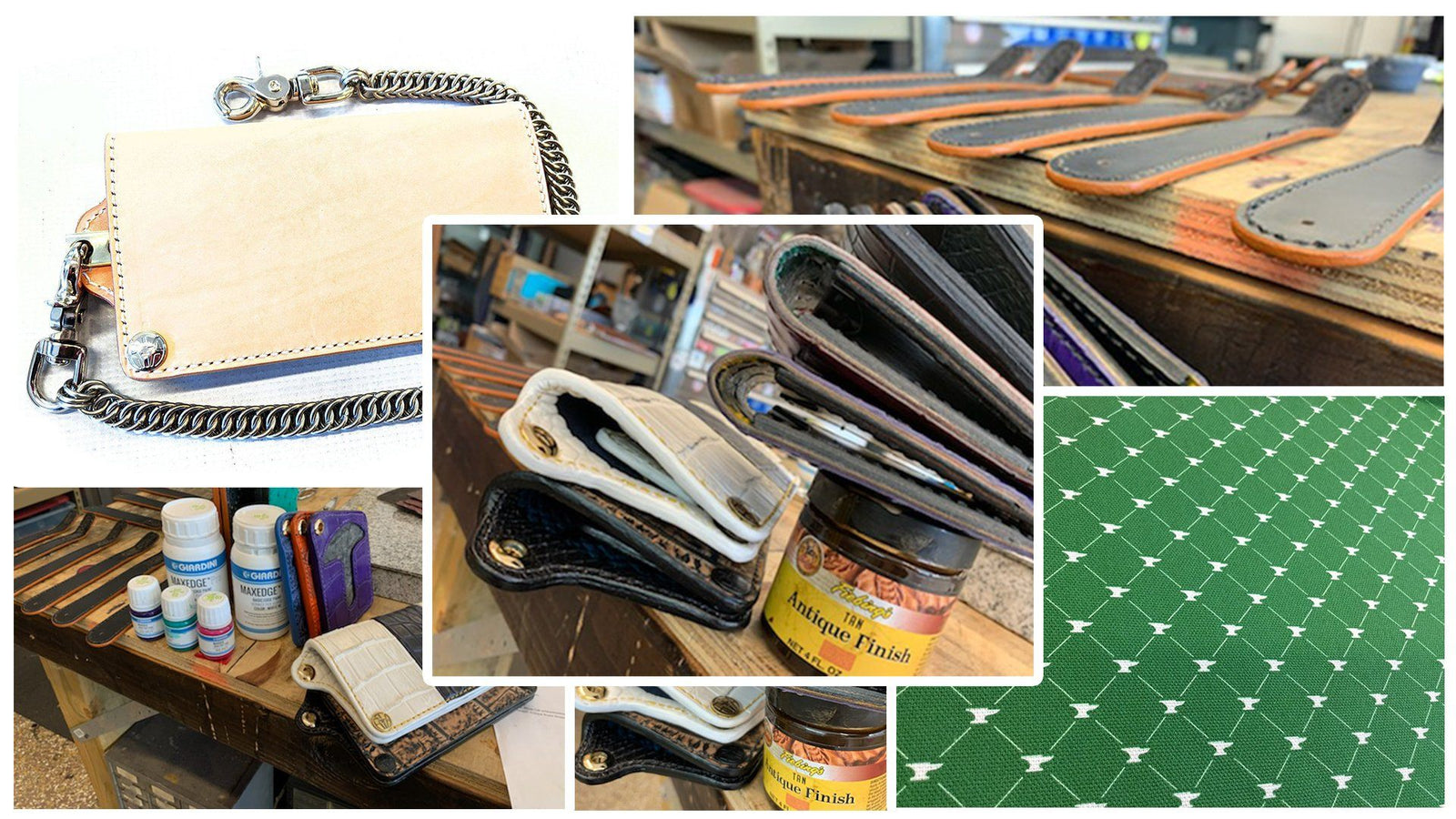Your Cart is Empty
26% OFF Website Wide - Merry Christmas!
26% OFF Website Wide - Merry Christmas!

Waxed/Unwaxed, Edge Coat/Burnish, Cloth/Leather? Small Details to Consider!
May 01, 2020 4 min read
For pretty much all products these days we've begun to list out a specific set of specifications that are featured as part of each product. These specs liste improtant details like the material a product is made of, it's color, or size. But there are a few more particular specifications that may not make much sense to the unaware that can really impact your experience with your Anvil Product in the long run.
Waxed Vs. Unwaxed
First, unless otherwise noted all leather goods have a waxed and sealed finish that helps preserve the color fastness, and longevity of the look of the product. Effectively that wax and finish makes that product look like it did when you took it out of the package longer. It helps protect the color from the grease on your hands and the dirt and grime of the environment it's in. We use atom wax on our cowhide products, and most of our exotics have some form of finish on the outside applied during tanning that protect the hide from abuse.
Unwaxed leather, is almost always a cowhide and not an exotic leather. Additionally it is un-dyed, only bleached so that it has no distinct color at the time of purchase. This leather is meant to be naturally coated with the oil from your skin and environment with use and as time passes. These natural, unwaxed leather products develop a patina that is unique to each product and provides a special character to the piece. It's important to note that an unwaxed leather product is still as hearty and durable as a waxed and sealed one. And so long as you don't leave either in the direct sunlight or expose it to caustic materials they should remain structurally sound for generations.
Burnish Vs. Edge Coat
The edge finish of a product has been a hotly contested detail point in many leather shops over time. Effectively there are two ways to resolve and finish the edges of a leather product, either you A) Burnish the leather, or B) Coat the edge in some sort of sealant. It turns out both are great options and have their merits. Burnished leather is effectively using a little wax and a lot of friction to heat and polish the layers of leather together so that the fibers become entwined at a fine scale. This type of finish let's you still see the individual layers, but also congeals them into a more cohesive piece. This "Cobbler's Finish" is a feature in a fine set of leather shoes, as you can still see the thickness of each leather layer once the product is complete. This look is more rustic or traditional.
Edge Coating is a process that requires some patience, but allows for some more exotic appearances. You may have come across some leather belts that have a hard black surface on the edge, which is one type of edge coating called "Edge Kote" it's a specific product and is meant to be hard and tough as hell, but there are other options that are nicer and allow for more colorful approaches. Giardini makes a latex edge paint for leather that we've been using here in the shop for about a year on various projects. This liquid acts just like any other paint, and it comes in a ton of colors. Additionally, if you know your way around paints you can mix them to get just about any color under the rainbow. Once they're dry they're flexible enough to break in with your wallet, and tough enough to not rub or flake off.
Cloth Liner Vs. Leather Liner
For many many years we have used cloth liners to line the inside of our wallets. Some old pieces had bandanna liner, or tattoo flash liner and they worked pretty well. We upgraded to a little tougher, branded material a few years ago and it's treated us fairly well. The color choices are nice and the material is sturdy. The ability for us to get our own designs printed has always been a great feature for branding too. But the process of lining the wallets is finicky so recently we've been working towards using a leather alternative that's a little more expensive, but ultimately makes for a more reliable product.
Our Anvil Leather Liners are made from a split, which is a piece of leather that is cut horizontally to make it nice and thin. We place our Anvil Pattern onto the hide and adhere it to the back side of the structural leather we're working with. This means the wallet is constructed completely from leather, which should give it the durability to last pretty much forever. As we move forward you'll likely see many product listings switch over to the leather liner as a default. But we'll continue the cloth liners for as long as we have materials to do so.
